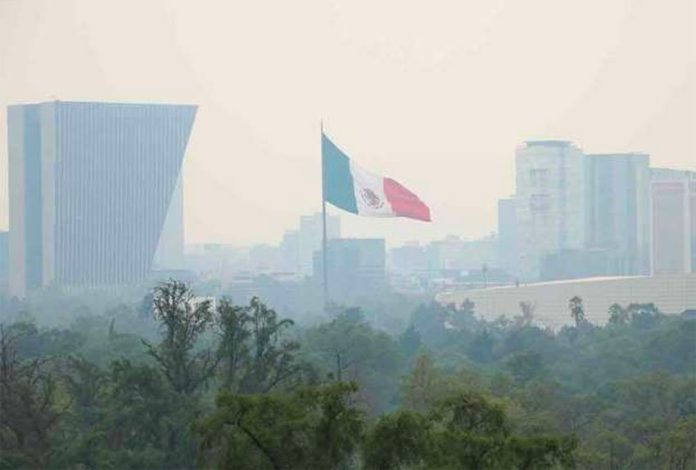The environmental contingency program that stipulates when air pollution alerts are issued in Mexico City has been temporarily suspended due to legal action taken by Greenpeace.
Under the regulations set by the Environmental Commission of the Megalopolis (CAMe) in May, an environmental contingency is declared when the city’s Imeca index, which measures the quantity of fine particulate contaminants in the air, reaches 150.
But as a result of an injunction granted to Greenpeace, the government’s contingency program has been put on hold and contingency measures must be activated when the Imeca index hits 101.
CAMe chief Víctor Hugo Páramo explained that the environmental organization is seeking to align the activation of contingency measures to Mexico’s health protection regulations, which are stricter than those established by the government’s contingency program.
Once a judge makes a definitive decision about the Greenpeace legal challenge, CAMe will adjust its current protocols if need be.
“. . . When we have certainty about the judge’s ruling we will have to create a special protocol . . .” said Environment Secretary Marina Robles.
Despite that commitment, the head of Mexico City’s air quality measuring system said that Greenpeace’s proposal goes too far.
“The official Mexican [health] regulations are one thing and an environmental contingency is another issue. It wouldn’t make sense,” Sergio Zirath said, adding that authorities would have to order cars off the road every day of the week.
CAMe established a new environmental contingent program in May shortly after Mexico City suffered several days of severe air pollution caused by fires in and around the capital.
In early June, the environmental commission presented 14 proposals aimed at reducing contamination including the introduction of stricter emissions limits for new cars and an expansion of the public transit system.
Source: Milenio (sp), El Sol de México (sp)
